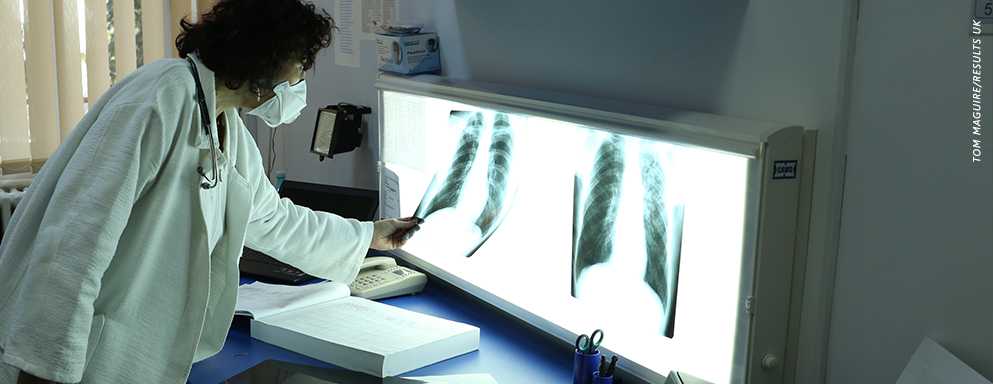South African Study Provides Compelling New Evidence on Role of Person to Person Transmission in Drug-Resistant TB Epidemics

CDC/Emory/NIH study published in The New England Journal of Medicine adds to growing body of evidence that drug-resistant TB is fueled more by direct transmission than previously thought in high-burden settings.
A joint Emory/CDC/NIH study published this week in The New England Journal of Medicine provides compelling evidence that extensively drug-resistant tuberculosis (XDR TB) is spreading primarily from person-to-person in KwaZulu-Natal, South Africa. The study builds on a growing body of evidence showing that person-to-person transmission is a key driver of the spread of drug-resistant TB in some countries with high burden of disease. The study is the first of its kind, bringing together multiple state-of-the-art methods to study TB transmission in a high incidence setting and was funded by the National Institute of Health and conducted by a team of researchers from Emory University, CDC, Albert Einstein College of Medicine, and the University of KwaZulu Natal in South Africa.
South Africa is experiencing a widespread epidemic of XDR TB, the deadliest strain of TB, including a ten-fold increase in cases since 2002. This study found that the majority of cases (69 percent) in high HIV and high TB-burden settings in South Africa occurred due to person-to-person transmission rather than inadequate TB treatment. It identified epidemiologic links between 30 percent of participants, with many connected through hospitals, households, and community settings, such as workplaces. The study has important implications for prevention and treatment efforts for extensively drug-resistant TB.
The study included 404 XDR TB patients in KwaZulu-Natal, South Africa and was led by a team of researchers including Emory University’s Dr. Neel R. Gandhi and Dr. Sarita Shah of CDC’s Division of Global HIV & TB. Researchers examined the role of transmission by combining robust genotyping methods with social network and epidemiologic analysis.
“These findings are further proof that we need to better detect, prevent, diagnose, and treat drug-resistant TB,” said former CDC Director Tom Frieden, M.D., M.P.H. “TB resistant to last-resort drugs is spreading through hospitals and homes, at work, and in other places in this high burden community. The only way to stop this disease is by improving infection control and rapidly finding and effectively treating people with TB.”
Study authors suggest that breaking the cycle of transmission of drug-resistant TB requires a greater focus on infection control efforts – while also maintaining global programs to quickly detect and effectively treat all people with TB.
What is XDR-TB?
Extensively drug-resistant TB is a global epidemic. Reported in 105 countries worldwide, XDR TB is resistant to at least four of the best anti-TB drugs. In most places, treatment is effective less than 40 percent of the time, with death rates as high as 80 percent for patients who also have HIV.
Interrupting the spread of XDR-TB can be particularly challenging in countries most affected by the disease. In places with limited resources, measures to prevent the spread of TB such as contact tracing, implementation of effective infection control measures, improved ventilation in hospitals and better training for healthcare workers, can be particularly difficult.
CDC’s Division of Global HIV & TB (DGHT) is working to find, cure, and prevent TB worldwide, through on-the-ground interventions in more than 25 countries and global leadership in research and technical expertise.
Resources:
Learn more about CDC’s efforts on this issue here
Read the full New England Journal of Medicine article here
View a graphical depiction of drug resistant TB including key findings from the study
Share more about the urgent threat of drug-resistant TB
Read how one CDC expert is fighting XDR TB around the world
- Page last reviewed: January 18, 2017
- Page last updated: January 18, 2017
- Content source:


 ShareCompartir
ShareCompartir